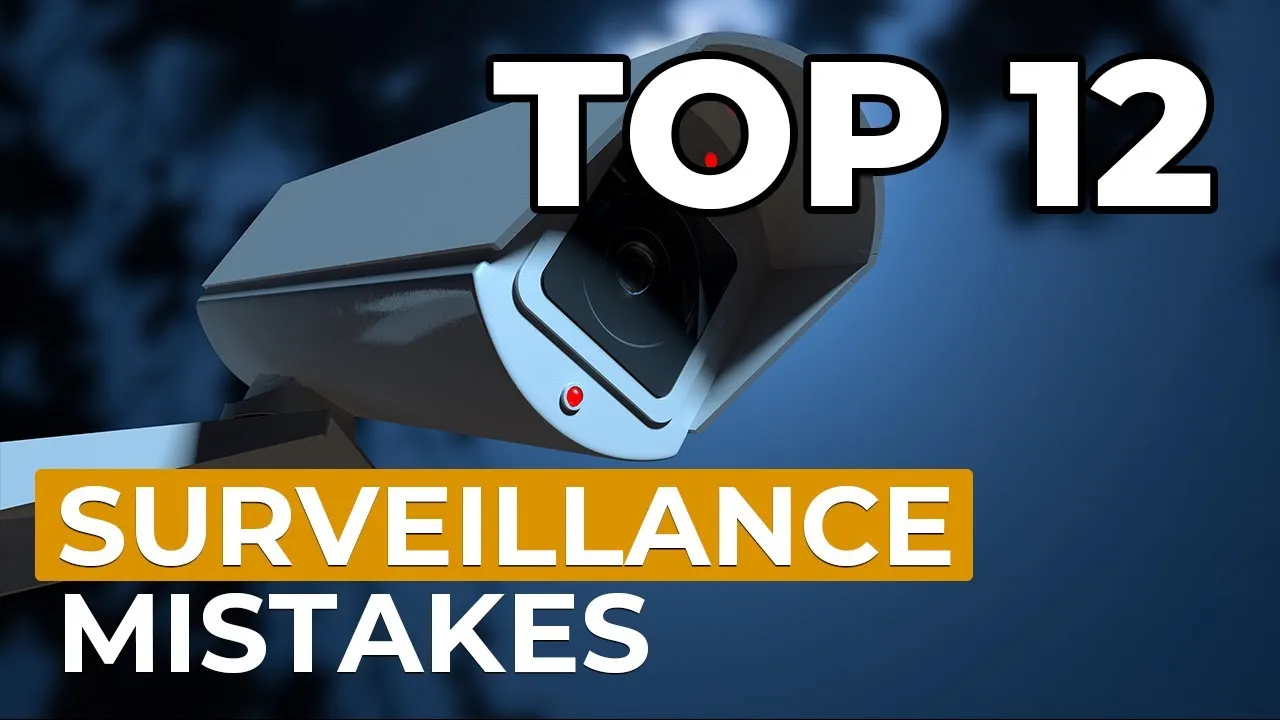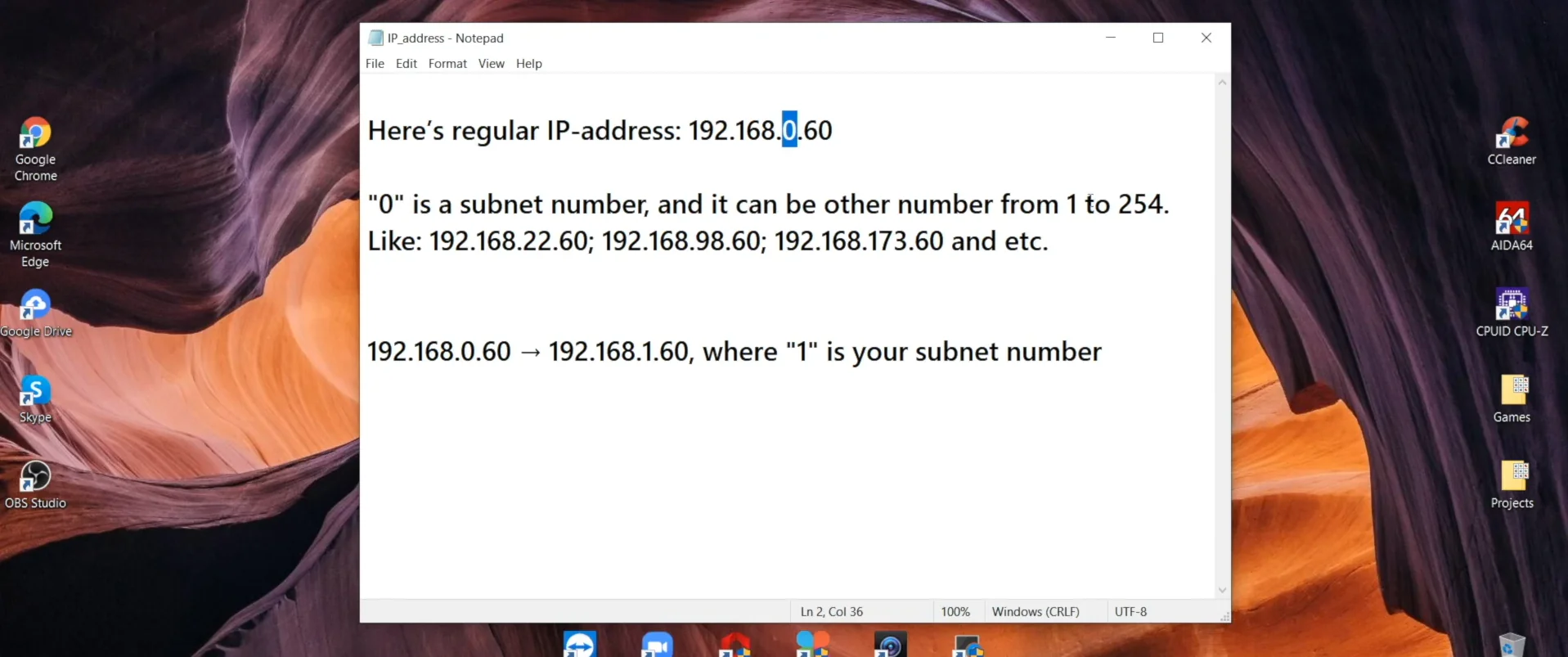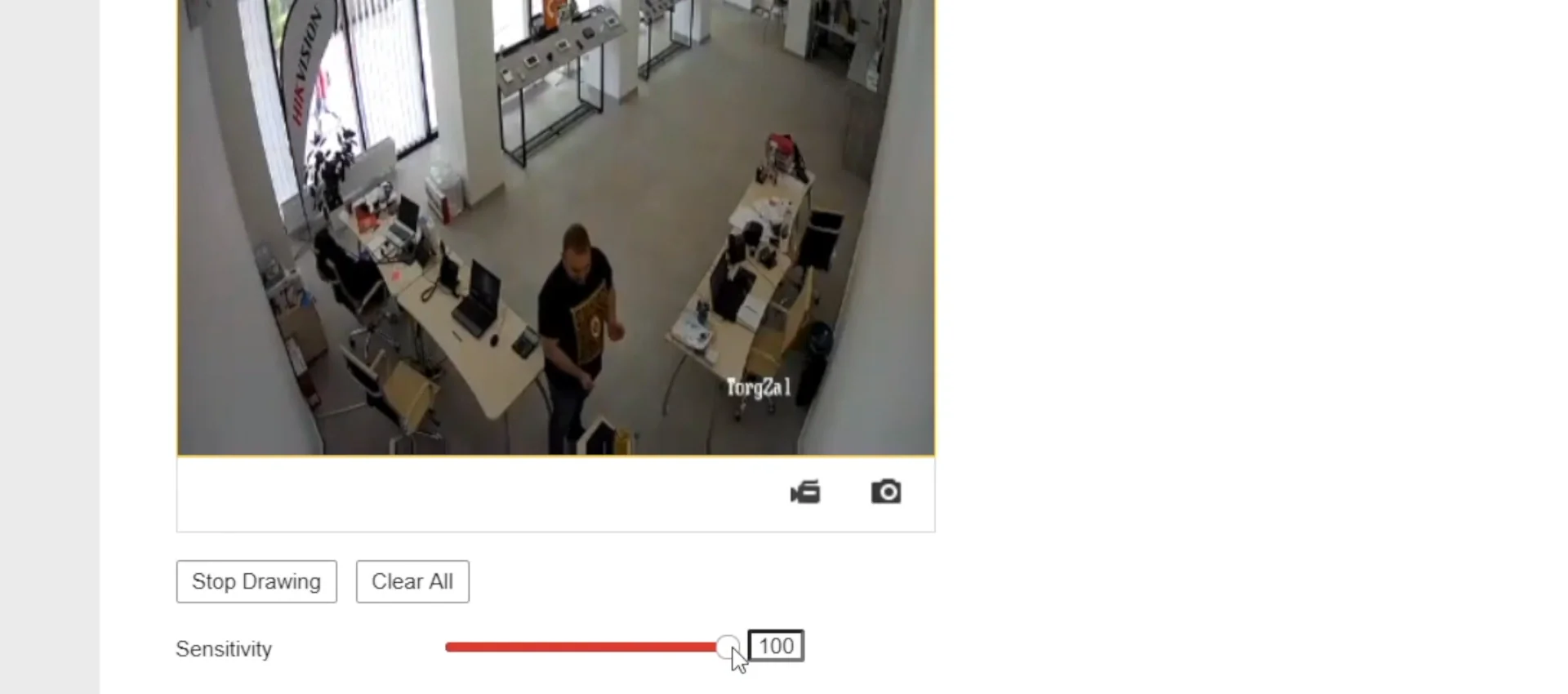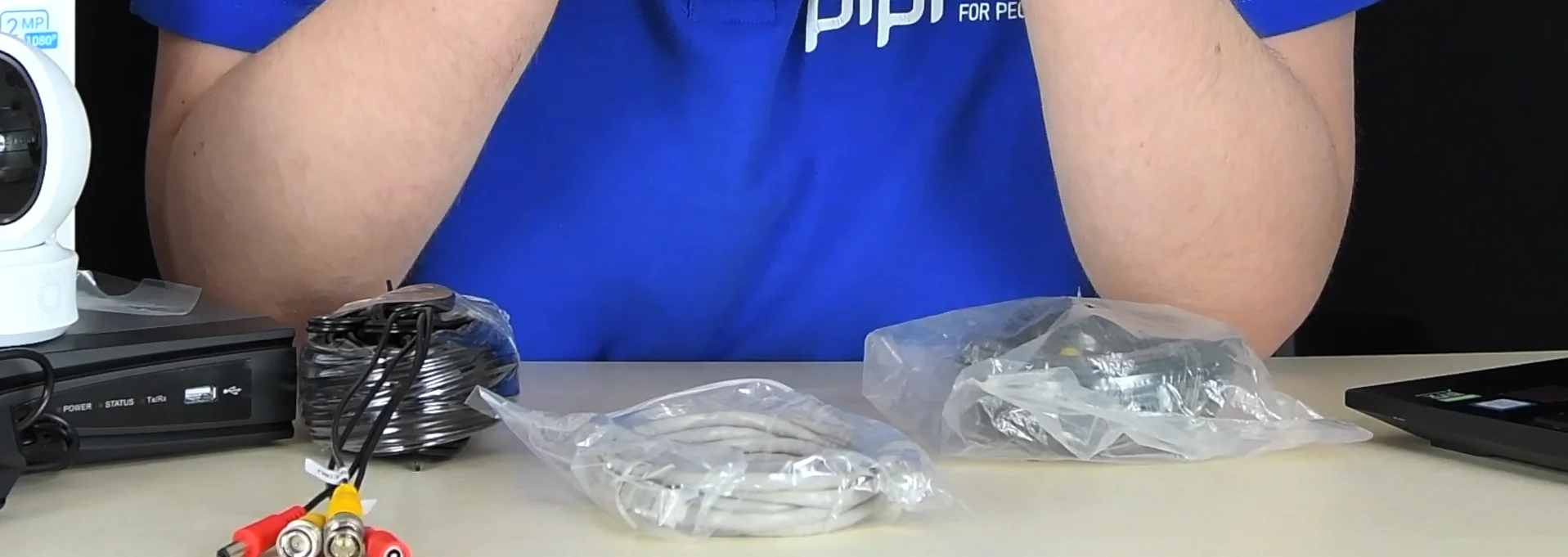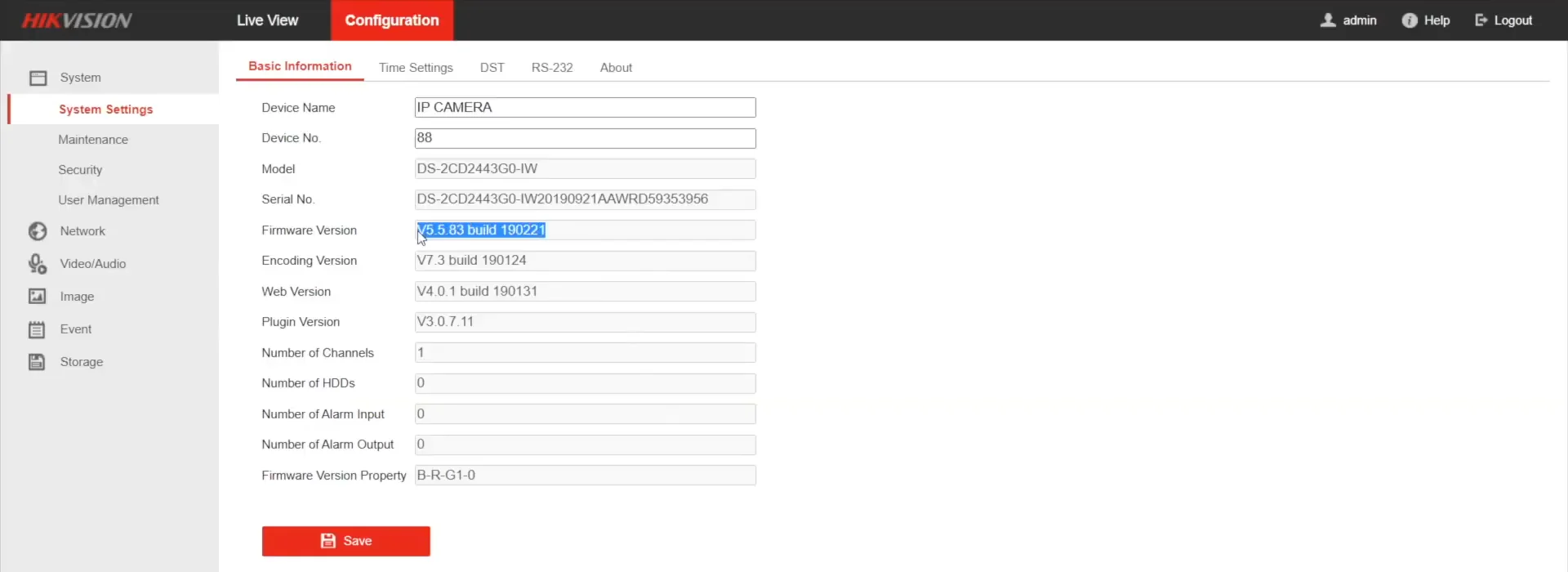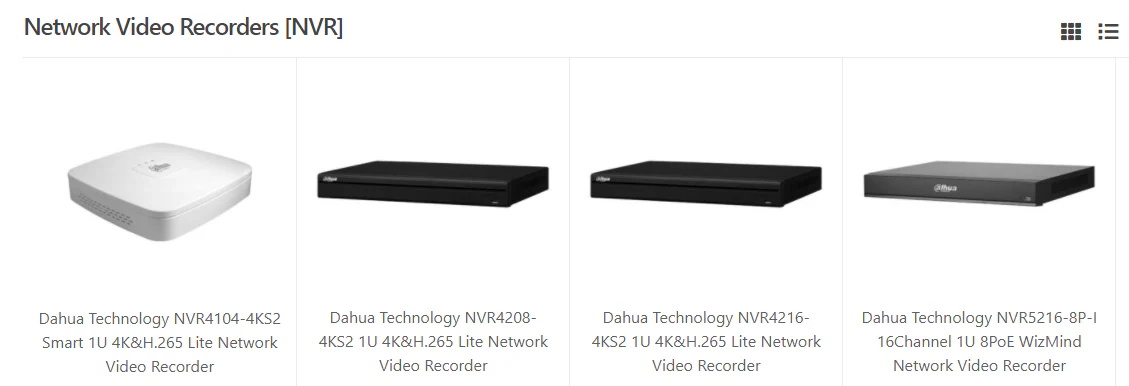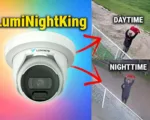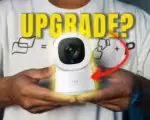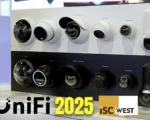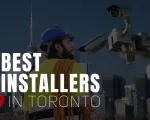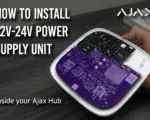While on a preparation stage before shooting video/making this material, I talked to our technicians, installers, our salesmen, I was researching, and I’ve seen how other technicians answer this question. So, we don’t pretend to be original, but these are the most common mistakes made over many years till now by us and our clients who reached out to us seeking for answer. And thus, I will be answering from this position.
Wrong subnet and checking a conformity
Totally a number 1 among all other items on the list, judging by a repeat rate. You purchased a network camera, got home, powered it on, inserted the network cable, activated it, and… nothing happened. The Camera is still offline – you don’t get video. What’s wrong? Camera’s default network settings are different from the ones that you have within your network.
Here’s a regular IP address, where “0” is a subnet number: it may be other number from 1 to 254, but the point is that this is number one item that you have to check in case you don’t get a video from the camera over the internet. It’s likely that you need to modify just a single number, like changing that 0 to 1, and that will do the thing. You can check what your network parameters are like this:
Wi-fi Signal Frequencies
5 GHz. signal frequency instead of the supported 2.4 GHz. What frequencies is your Wi-fi router running on? 2.4 Ghz or 5 Ghz? There are a lot of advantages of 5 GHz. over older 2.4GHz, except range, but yet, a majority of Wi-fi security cameras are working under 2.4 GHz. frequencies. This is changing, but still, in such a case, you will be wondering what went wrong if everything was done right, and this actually isn’t that obvious. I remember I caught myself on such a mistake.
Lack of power on the camera
Depending on the distance or on whether one cable is supplying too many cameras at once, a different power voltage gets to the cameras. For instance, your camera is 12V, and you power it from a 12V power supply, and everything seems to be correct, but if, for example, this distance is 20 meters, then eventually, less power gets to the camera, like 10V only. Also, this can be seen if, let’s say, the quality of the video noticeably worsens at night. Why? Because the infrared lights are switching on and also require power. And your camera is already getting less power, and now even worse. As a result, interferences on video, and the camera is randomly going on and off. This matters, and this has to be considered too. A summary amount of power needed for cameras is bigger than what’s power supply unit can deliver – and this is a frequent one.
Motion Detection Sensitivity
Here’s a thing – you installed a camera, turned on notifications or alarm triggered by motion in the camera’s sight. And now you are testing it and it doesn’t work, or isn’t accurate. You’re trying to adjust the camera’s position, a different incline angle, but it doesn’t work. So why? Because it’s normal. Because the default sensitivity of a PIR sensor is set to a low-middle level. Now, if such a problem occurs with you, get into the camera’s settings and raise a sensitivity level so that when you are testing it, your every move is being registered.
Detection Zone wrong set-up
When drawing a detection zone, do you select the entire picture? Because if you do, you will have a lot of false alarms. Because you are not excluding moving objects like trees and their leaves, which are fluctuating throughout the entire day. And the same is applicable to sun rays. As we’ve got an image change detection type, pixels, in other words, the sun and its rays’ angle and position may also cause false alarms, as they are changing throughout the entire day too.
Blocking the Camera’s LED Lights and IR lighting reflecting from the glass
The matter of installation – to make sure the camera’s IR LED lights have a free view and nothing is blocking them. That’s quite a common one – we expect the camera to switch into night mode to make it able to see at night in black and white due to built-in infrared LEDs, which light up a scene, and which lighting is invisible to the human eye. And there are 2 mistakes made here. First – installing the camera that way so its view or a part of its view is blocked by a wall or some objects located near to lens in its field of view. Or when you install the camera in front of the glass window, so a large part of the image is taken up by the glass. In both scenarios camera’s infrared light is reflected back to the camera, and the night view feature is completely useless.
Skimping on wiring
That’s an interesting one. For instance, 4 megapixel and higher resolution cameras are common now, and I cannot call them cheap. And what I frequently see is that people purchase cheap wires along with a 4 megapixel or higher camera. And mostly, because they don’t know how cable quality affects image quality. And by the image quality, I mean image purity and clearness, the absence of lags, glitches, interferences, graining, and blur. First of all, that should be a copper wire, not a bimetallic one. And also – these are different cables: indoor and outdoor ones. The opposite of this is that sometimes people take good wires but don’t know how to use them. Like, there are UTP, FTP, and SFTP types. And sometimes they get a good FTP cable, but are not grounding it, and are using cheap plastic connectors instead of good iron ones.
Old Firmware
Such a common and frequent mistake is simply a device running an old firmware. And you usually stumble upon this when you have done everything completely right, but some functions are JUST NOT WORKING. I mean, let’s say, you have purchased a camera of 2019 launch year, and… now it’s 2020, and the manufacturer has more likely released an update, even several ones probably, improving stability, adding new functions, and et on. So, the first thing to do after you get the cam out of the box… – check the firmware relevance. This issue exists literally because you are not connecting your camera to the cloud. Either way, in the phone app or any cloud service, you will see a prompt telling you that a new firmware update is available, and all you have to do is to just accept its download and installation with 1 button press. Obviously, it’s important, but it’s easy to miss this in sight.
Wi-Fi Camera System Issues
This one is about expectations of stability and reliability from a wi-fi camera system, outdoor cameras especially. There are a lot of pros of having a Wi-fi camera system in your home, but the biggest and one of the few disadvantages is Wi-fi type video transmission. Because there are enemies of Wi-fi signal: rain, snow, storms, and similar conditions. Also, that’s a network overload. The more network devices you’ve got within your network, the bigger your network load, and consequently, the worse signal strength is for every single device. Because video footage is not some sort of small file, but a big and constant one, expect your video surveillance system to load your network hard. The solution is to get a separate network for the video surveillance system, especially if that’s a big system. In such a case, you will divide home appliances and computers, and phones from a video surveillance system that loads a network completely.
A video recorder selection
What recording resolution is supported on the video recorder that you are choosing? 4, 6, 8 megapixels? You’ve got to answer this question when selecting a video recorder. And one more on top – channel amount on an NVR or DVR – plan ahead. You are planning 3 or 4 cameras and a 4-channel recorder? Take an 8-channel recorder. Why? Because if you want to add one more camera, which is running a bigger resolution to your setup, you will have to buy a video recorder supporting a bigger resolution and having 8 channels for connecting cameras, thus, you are overpaying.
Storage Capacity
You are not calculating the required storage size in accordance with the camera’s resolution, cameras quantity and the recording type. Motion, or any other event, triggered recording, or a continuous recording? How much 4 K-resolution video from a camera will take up space? One more question to answer when selecting a video surveillance system.
Not securing connections
When those cables and port joints are not water-tight and weatherproof. No mounting box, no weatherproof clips over cables and ports joints? Don’t be surprised when any wind or weather kills your system.
Conclusion
When selecting a video surveillance system, there are many factors and pitfalls that only professionals can see. We often get calls that sound like: “I just want this camera and that’s it.” And then it turns out that a person needs a completely different camera for their task. And we get a refund. This is your time and your money. Don’t do that – everything mentioned earlier. Or let professionals handle it.
